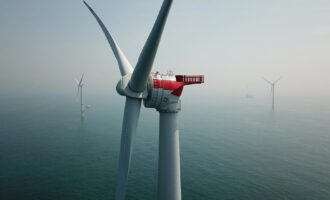Lubricants in the cities of tomorrow
By Hank Hogan
The uncertainty would seem to argue for waiting, but that would not be wise, according to Giovanni Di Noto, a consultant on emerging trends at F&L Asia Ltd. “There’s an emerging strategic and industry changing opportunity for the lubes and additives sector to capitalise on their native material science expertise, especially in the synthetic area,” he said.
The lube industry should “embrace the market shift to a pervasive smart materials environment in coming years, and become the prime investors and key players of what might ultimately challenge and put at risk their current business model,” Di Noto said.
There’s no clear crystal ball, particularly when talking about a time decades in the future when tomorrow’s cities will be fully functioning and populated. But a good start is to look at current worldwide urban trends that could impact lubricants demand.
One is population growth, which all things being equal should drive up demand. The number of people living in cities is projected to grow from 3.9 billion today to more than 6 billion by 2045, according to a United Nations report published in 2014. Some 54% of people live in urban areas now, which will rise to 66% in 30 years.
The degree of urbanisation is growing, but it varies by region. Seven out of 10 Europeans today live in cities. By 2050, that figure will have risen to 85%, said Siim Kallas, European Commission vice president.
Elsewhere, urbanisation is considerably lower. In India, for instance, the current figure is only 31%, Di Noto said. Because urbanisation will grow, India has allocated INR 70.6 billion (USD 1.13 billion) for smart cities in its 2014-15 budget and plans to develop 100 new smart cities in coming years, he said.
Smart cities are those where sensors, computers and software improve the performance o the infrastructure. Global IT services provider IBM touts such a combination as a way for people to more easily get around congested urban areas. In describing how this would work, Guru Banavar, IBM vice president and chief technology officer for the company’s Global Public Sector, said one possibility would be to reconfigure highway lanes based upon traffic flow, with the system anticipating and not simply reacting to congestion. It would contact drivers to take alternate routes to avoid the congested areas. Implementation of this technology could potentially minimise stressful or so-called “stop-start” driving, which consumes more fuel and more lubricant than driving at a steady speed.
The drive for mobility “is one of the deepest human drives,” according to Jesse Ausubel, director of the Program for the Human Environment at Rockefeller University. “Certainly, bio-derived fuels and lubes will increasingly be sought to power urban transportation, buildings and infrastructure,” said Pamela Gordon, CEO of the San Francisco-based consultancy Technology Forecasters.
One of the options for more sustainable transport is the all-electric vehicle, which Gordon said may consume little, if any, lubricants. Another area with an effect on lubricant demand is distributed power production from sun, wind or waves. As we generate more electricity from wind power, for example, demand for higherperformance, longer-life lubricants will only intensify.
However, the impact of smart materials on lubricants is largely unknown so far. Smart materials may assemble themselves, self-repair and adapt to the environment. The development and increasing use of such materials could potentially drive down lubricant demand significantly, Di Noto said. Along with technology, regulation has an impact in many different areas with implications for lubricants. Take for instance the effect of laws on packaging and products.
“Materials designed into products and packaging according to eco-design principles favor renewable, non-hazardous materials, fewer materials, and smaller or lighter weight products,” Gordon said. So far, very few lube marketers have taken up this principle, as packaging is a critical element in selling their goods. However, the good news is the volume of bulk lubricants sold is growing, at least in the United States. The bad news is it’s harder to monitor the quality of the bulk product.
Another instance where edicts could impact lubricants consumption is vertical urban farming. Putting crops on rooftops reduces water usage by as much as 40% while capturing carbon, producing biofuels and, perhaps most importantly for lubricants, cutting transportation costs. For those reasons, laws are being passed to mandate the use of such farms in urban settings. France, for example, recently enacted new building regulations enforcing roof-top gardens and solar panels for any new construction, Di Noto said.
Among emerging trends being driven by regulation, decarbonisation will probably have the most impact. There is a worldwide effort in all transport sectors to reduce greenhouse gas emissions. For instance, Europe’s long-term goal is to reduce transport emissions by 60% by 2050, said Miguel Arias Cañete, commissioner for climate action and energy for the European Commission.
The most cost-effective way is to improve the efficiency of sea, air and land transport, he said. That is already being seen today as efforts are underway globally to produce more fuel-efficient lubricants for passenger car vehicles to meet the needs of low-friction engines. These efforts will only grow and expand to other modes of transportation, with one possible result being lower lubricant consumption. All pure electric vehicles, for example, won’t require crankcase oils at all, and thus will have a lower carbon footprint than conventional gasoline engines, depending on how the electricity is produced. Since cities today generate an estimated 70% of greenhouse gas emissions, these will also be a focus for decarbonisation.

It will take decades to build the cities of tomorrow, and there will be opportunities for the lubricants industry to develop smart and sustainable products. “Such fundamental trends seem to point toward a greater need for sophisticated, durable, sustainable and environmentally friendly lubricating and additive products,” Di Noto said.
For an example of what this might involve, Dutch oil and gas major Shell recently launched Project M, a practical global city concept car based on the internal combustion engine, “intended to inspire thinking about maximising personal mobility while minimising energy use.”
“We believe this Shell car will demonstrate how efficient a car can be when Shell works in harmony with vehicle and engine makers during design and build, supplyingfuels and lubricants technical expertise,” said Shell Vice President of Lubricants Technology Selda Gunsel.







